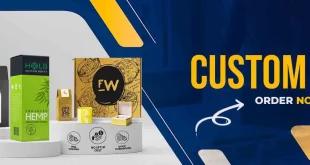Beverage packaging plays a crucial role in the modern consumer market, transcending mere functionality to become a central element of branding, marketing, and sustainability efforts. From early innovations to contemporary designs, beverage packaging has evolved significantly, reflecting broader technological advancements, environmental considerations, and consumer trends. This essay delves into the historical development, current trends, and future directions of beverage packaging, exploring how it influences consumer behavior, supports brand identities, and addresses environmental challenges.
Historical Development of Beverage Packaging
The evolution of beverage packaging can be traced back to ancient civilizations. Early packaging methods included the use of ceramic jars and wooden barrels for storing and transporting beverages such as water, wine, and beer (Ferguson 23). As trade and exploration expanded, so did the methods of packaging, driven by the need for improved preservation and transportation techniques.
In the 19th century, the invention of glass bottles revolutionized beverage packaging. The introduction of the crown cork by William Painter in 1892 provided a reliable seal that extended the shelf life of beverages and enabled the mass production of carbonated drinks (Patterson 45). Glass bottles were initially favored for their impermeability and ability to maintain the quality of beverages. However, the high cost of production and fragility of glass led to the search for more practical alternatives.
The mid-20th century witnessed the rise of plastic and aluminum packaging. The development of polyethylene terephthalate (PET) in the 1970s introduced a lightweight, durable, and cost-effective packaging solution that quickly gained popularity (Smith 112). Concurrently, aluminum cans became a standard for carbonated beverages, offering convenience and recyclability (Jones 67).
Contemporary Trends in Beverage Packaging
In recent decades, beverage packaging has become a sophisticated field encompassing various trends that reflect consumer preferences, technological advancements, and environmental concerns.
1. Sustainability and Eco-Friendly Packaging
One of the most significant contemporary trends in beverage packaging is the shift towards sustainability. The growing environmental consciousness among consumers has driven companies to seek eco-friendly packaging solutions (Sweeney 21). Brands are increasingly adopting recyclable materials, such as aluminum and glass, and exploring innovative alternatives like biodegradable plastics and plant-based packaging (Morris 89). The use of recycled content and the development of circular economy models are central to these efforts, aiming to reduce waste and minimize environmental impact (Gonzalez 102).
2. Smart Packaging Technologies
Smart packaging technologies are transforming the beverage industry by enhancing functionality and consumer engagement. Advances in digital printing, QR codes, and augmented reality (AR) are enabling brands to offer interactive experiences and real-time product information (Brown 56). For example, AR labels can provide consumers with immersive content, such as virtual tours of production facilities or interactive games (Wang 34). These technologies not only improve the consumer experience but also serve as marketing tools that differentiate products in a competitive market.
3. Minimalist and Aesthetic Designs
The trend towards minimalist and aesthetically pleasing designs reflects a shift in consumer preferences towards simplicity and elegance. Contemporary beverage packaging often features clean lines, muted colors, and refined typography (Davis 78). This design philosophy caters to a consumer base that values premium aesthetics and a sophisticated brand image (Adams 63). Brands are also utilizing limited edition and seasonal packaging to create exclusivity and appeal to collectors (Taylor 44).
4. Functional and Convenient Packaging
Functional aspects of beverage packaging continue to be a key focus. Innovations such as resealable caps, easy-pour spouts, and ergonomic bottle designs address consumer demands for convenience and usability (Johnson 91). Additionally, advancements in packaging materials, such as lightweight composites and flexible pouches, enhance portability and storage (Lewis 53). These features cater to the on-the-go lifestyle of modern consumers, making packaging a critical component of product appeal.
The Role of Beverage Packaging in Brand Identity and Marketing
Beverage packaging is not only a protective barrier for products but also a critical element of brand identity and marketing strategies. The design, functionality, and sustainability of packaging all contribute to how a brand is perceived by consumers.
1. Brand Differentiation and Recognition
Packaging design plays a vital role in brand differentiation. Companies invest significantly in creating distinctive packaging that sets their products apart from competitors. Elements such as color schemes, logo placement, and unique bottle shapes contribute to brand recognition and consumer loyalty (Smith 119). For instance, the iconic shape of the Coca-Cola bottle has become a symbol of the brand, reinforcing its market presence (Miller 72).
2. Emotional and Psychological Impact
Beverage packaging also taps into the emotional and psychological aspects of consumer behavior. Effective packaging can evoke feelings of luxury, nostalgia, or excitement, influencing purchasing decisions (Wilson 88). For example, premium beverage brands often use elegant packaging to convey exclusivity and high quality, appealing to consumers seeking a premium experience (Robinson 47).
3. Marketing and Promotional Opportunities
Packaging offers numerous marketing and promotional opportunities. Limited edition releases, collectible designs, and cross-promotional campaigns leverage packaging to attract attention and boost sales (Walker 30). Brands often use packaging as a canvas for creative marketing strategies, such as thematic designs for holidays or collaborations with popular figures (Young 57).
Environmental Challenges and Future Directions
Despite advancements in packaging technology, the beverage industry faces ongoing environmental challenges. Addressing these issues requires a multifaceted approach involving innovation, regulation, and consumer education.
1. Reducing Plastic Waste
Plastic waste remains a significant environmental issue. Although many companies are exploring alternative materials, the widespread use of single-use plastics continues to contribute to environmental degradation (Clark 64). Efforts to address this challenge include the development of biodegradable plastics, increased recycling rates, and the implementation of extended producer responsibility programs (Jones 72).
2. Promoting Circular Economy Practices
The concept of a circular economy is gaining traction as a framework for reducing waste and promoting sustainability. Beverage companies are investing in technologies and practices that support the reuse and recycling of packaging materials (Sweeney 29). This includes initiatives such as bottle deposit schemes, closed-loop recycling systems, and the use of recycled materials in new packaging (Gonzalez 108).
3. Innovative and Sustainable Materials
Future directions in beverage packaging involve the exploration of innovative and sustainable materials. Research into alternatives to traditional plastics, such as plant-based materials and biopolymers, is a key focus (Brown 62). Additionally, advancements in material science are driving the development of customized boxes solutions that are both functional and environmentally friendly (Lewis 45).
Conclusion
Beverage packaging is a dynamic field that reflects broader trends in technology, consumer behavior, and environmental sustainability. From its historical origins to contemporary innovations, packaging has evolved to meet the needs of a changing market. The current focus on sustainability, smart technologies, and design aesthetics highlights the importance of packaging as both a practical solution and a strategic marketing tool. Looking ahead, the industry faces challenges related to environmental impact and resource management, but also opportunities for innovation and growth. As consumers become increasingly aware of environmental issues and seek meaningful brand experiences, beverage packaging will continue to play a pivotal role in shaping the future of the beverage industry.
 Daily Blogger News Stay updated with the latest trends and insights. Your reliable source for daily updates and information.
Daily Blogger News Stay updated with the latest trends and insights. Your reliable source for daily updates and information.






